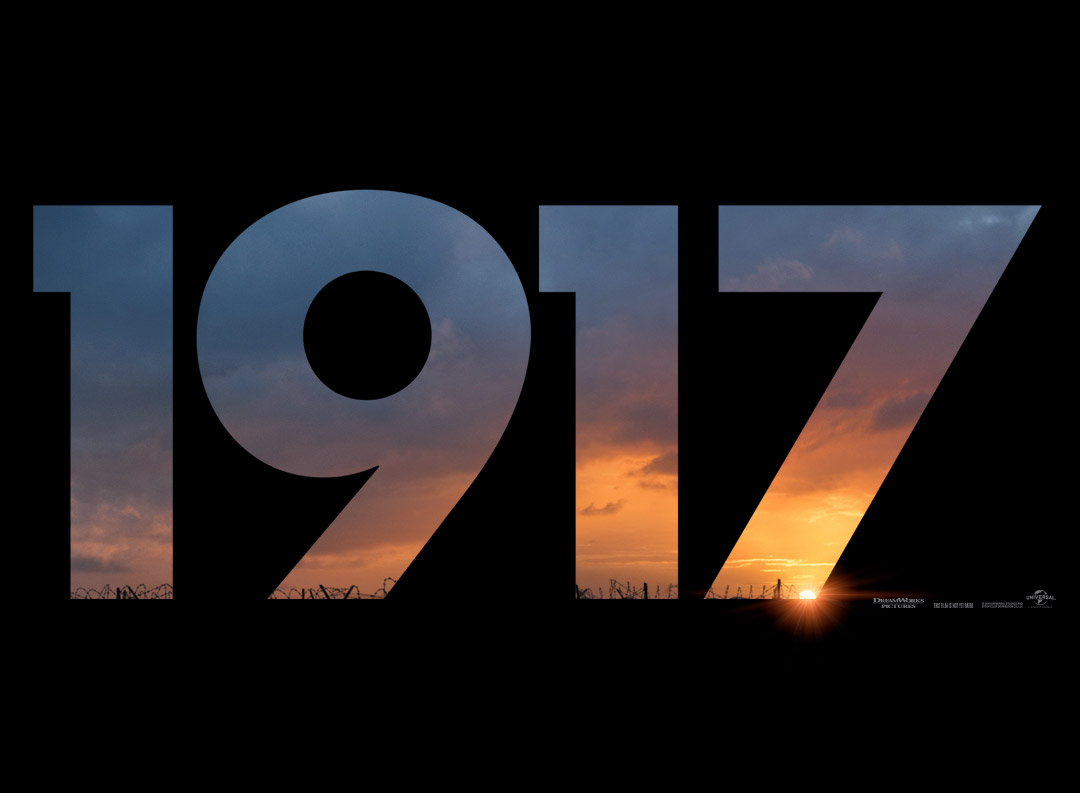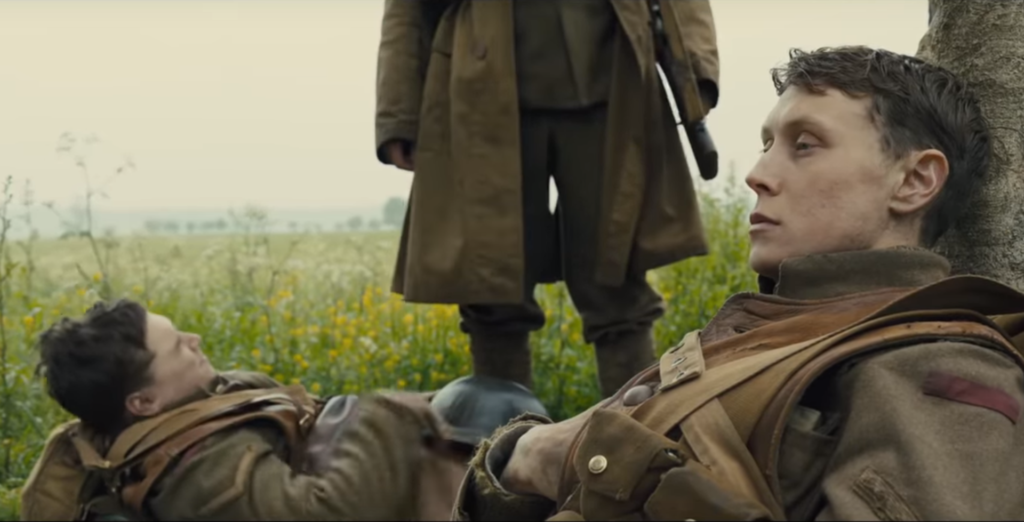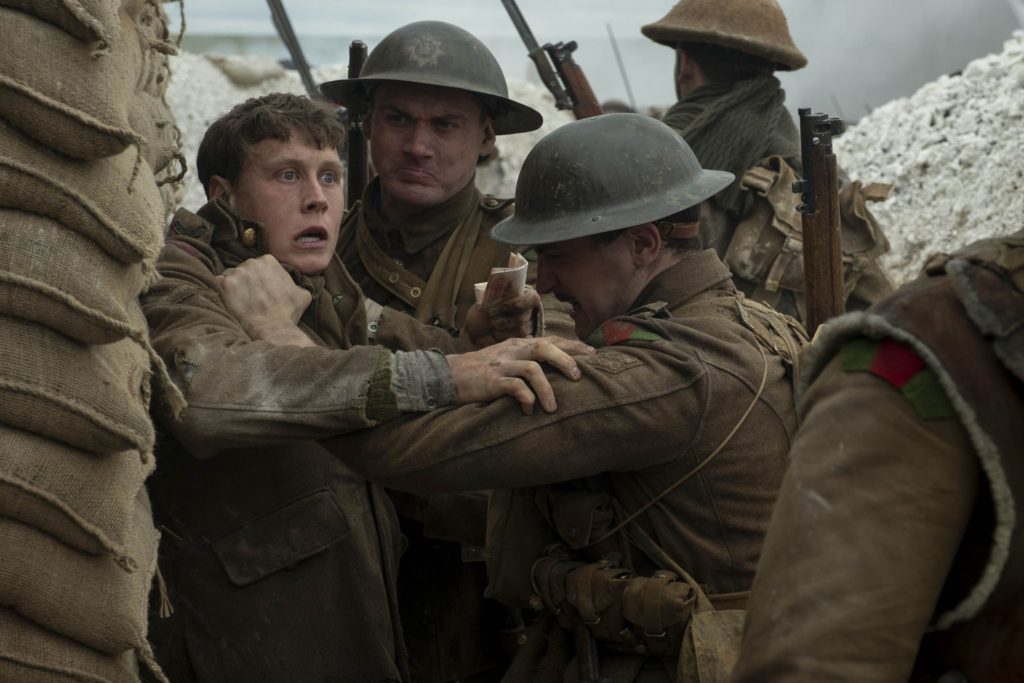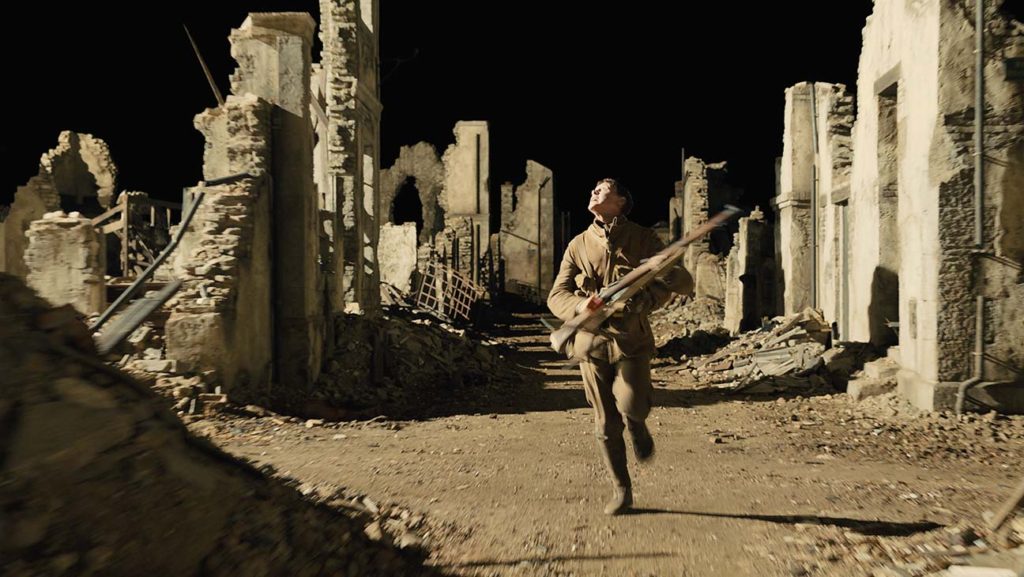
Just in time for a long stretch in quarantine, Sam Mendes‘ latest – most ambitious, Oscar-winning — film, 1917, is now out on digital and 4k/blu-ray as of this Tuesday.
Based on the wartime efforts of his grandfather during World War I, Mendes crafts a deft, slick, incredibly stylish period film focuses on two British soldiers, Blake (Dean-Charles Chapman) and Schofield (George MacKay), and their mission to cross no-man’s land, through enemy territory, and prevent a British attack that is nothing more than a trap. With no chance of communication or help, the both of them have mere hours to make it to their destination and prevent a massacre, as Blake’s brother is also part of the troops heading into the doomed charge.
For those who have heard absolutely nothing about this film (who knows? Maybe you’re out there!), the selling point of 1917 is the real-time, all-in-one-shot conceit. Director of Photography (and living legend) Roger Deakins outdoes himself with this movie, building one of the largest lighting rigs in cinema history, in order to create a gorgeous, lusciously composed, controlled sequence.
Using several invisible cuts (and interrupted by a blackout caused by a character’s falling into unconsciousness) the two-hour long movie plays out as close to real-time as possible, covering from the duo getting their orders, to the moment right before the fateful charge.
It’s perhaps a conceit that undercuts the horror of war, making it seem neat and composed, a stylistic choice more than a horrible reality; as it stands, the war is almost sanitized, perhaps not conveying the horror and insanity of the Great War (for context, watch Peter Jackson‘s excellent and revolutionary documentary They Shall Not Grow Old, and listen to the first-hand accounts, and actual footage of World War I).
The single shot direction helps to ratchet up the tension immensely: without the choice of cutting to different angles or perspective, there is a lack of release, a lack of seeming rest. Cuts work as a means to cut the tension, offering the audience some relief, and here, given not only the story, but the setting, the sense of dread and danger remains constant throughout. It is reminiscent of the long takes in Stanley Kubrick‘s 1957 films, Paths Of Glory, itself a World War I set film that had extensive battle scenes, and was meticulously directed and composed (the comparison is apt, as Mendes cites the film as one of the inspirations for 1917.
A triple feature with this, Paths Of Glory, and They Shall Not Grow Old would be quite the experience.) The extensive making-of docs (in particular “Allied Forces: Making 1917”) offer great insight as to the technical aspect to the making of the movie, in particular the reasoning (and technicalities) behind shooting the film in one shot. For cinephiles, it is one of the disc’s best, interesting specials. And while I had only viewed the film on its own, I absolutely cannot wait to listen to the two feature commentaries, one with Mendes, and one with Deakins.
While in a theatre, watching on the big screen, the action was immersive and all-encompassing, the transition to the small screen was just as reliable. The image is crisp, one of the best-looking transitions of a recent film, and certainly one of Mendes’ best-looking film thus far.
The audio transfer is incredible as well; with a decent sound set-up, the Dolby Digital Plus 7.1 mix is crisp, clear, without any drop-outs or fuzziness (I was particularly impressed during the battle scenes that the sound was as clean as it was). The transfer does composer Thomas Newman‘s rousing score more than enough justice; when the final charge starts up, and the music starts to swell, it will bring a knot to one’s throat.
Even if you’ve seen this movie before, this is a blu-ray worth owning, especially (and in particular) for the making-of documentaries, and commentaries. A beautiful movie, beautiful transfer, and a great movie to pass the time in quarantine. 4.5/5 Rations.
1917 is now available on 4K Ultra, blu-ray, DVD, and VOD.





